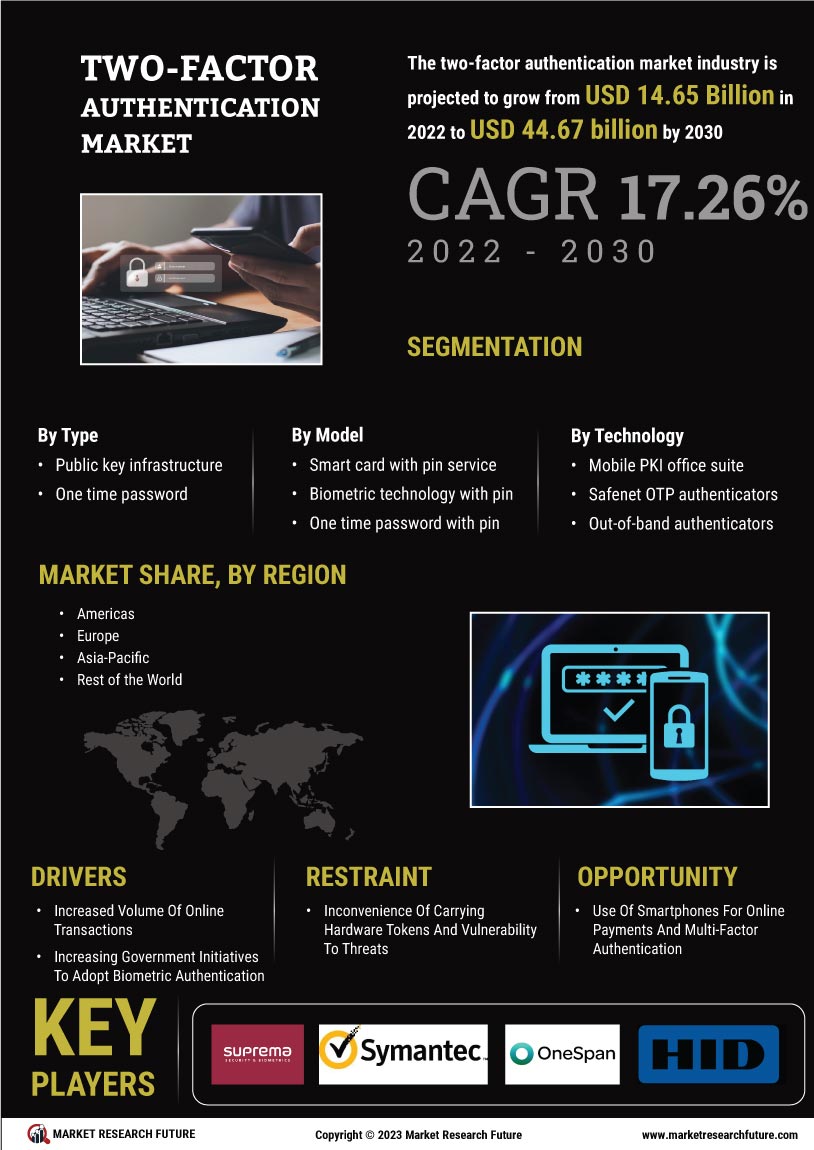The Two Factor Authentication (2FA) Market is currently characterized by a dynamic competitive landscape, driven by the increasing demand for enhanced security measures across various sectors. Key players such as Microsoft (US), Google (US), and Okta (US) are at the forefront, leveraging their technological prowess to innovate and expand their service offerings. Microsoft (US) has positioned itself as a leader in integrating 2FA into its cloud services, emphasizing user experience and security. Google (US), on the other hand, focuses on seamless integration of 2FA into its suite of applications, enhancing user trust and engagement. Okta (US) is strategically aligning its operations towards identity management solutions, which inherently include robust 2FA mechanisms, thereby shaping a competitive environment that prioritizes security and user-centric design.
The business tactics employed by these companies reflect a concerted effort to optimize their operational frameworks. For instance, localizing manufacturing and enhancing supply chain efficiencies are becoming increasingly vital as companies seek to mitigate risks associated with global disruptions. The market appears moderately fragmented, with a blend of established players and emerging startups, each contributing to a competitive structure that fosters innovation and responsiveness to consumer needs.
In August 2025, Microsoft (US) announced the launch of its new Azure Active Directory feature, which integrates advanced 2FA capabilities with artificial intelligence to predict and mitigate potential security threats. This strategic move not only enhances the security posture of its cloud services but also positions Microsoft (US) as a pioneer in utilizing AI for proactive security measures, potentially setting a new standard in the industry.
Similarly, in September 2025, Google (US) unveiled its enhanced 2FA system, which now includes biometric authentication options for its users. This development underscores Google's commitment to user security while also addressing the growing consumer demand for more convenient authentication methods. By integrating biometrics, Google (US) not only improves security but also enhances user experience, which could lead to increased adoption rates of its services.
In October 2025, Okta (US) entered into a strategic partnership with a leading cybersecurity firm to bolster its 2FA offerings. This collaboration aims to integrate advanced threat detection capabilities into Okta's identity management solutions, thereby enhancing the overall security framework for its clients. Such partnerships are indicative of a broader trend where companies are recognizing the importance of collaborative efforts to address complex security challenges in an increasingly digital world.
As of October 2025, the competitive trends within the 2FA market are heavily influenced by digitalization, sustainability, and the integration of artificial intelligence. Strategic alliances are becoming a cornerstone of competitive differentiation, as companies seek to combine their strengths to deliver comprehensive security solutions. The shift from price-based competition to a focus on innovation, technology, and supply chain reliability is evident, suggesting that future competitive dynamics will increasingly hinge on the ability to offer cutting-edge solutions that meet evolving consumer expectations.


















Leave a Comment